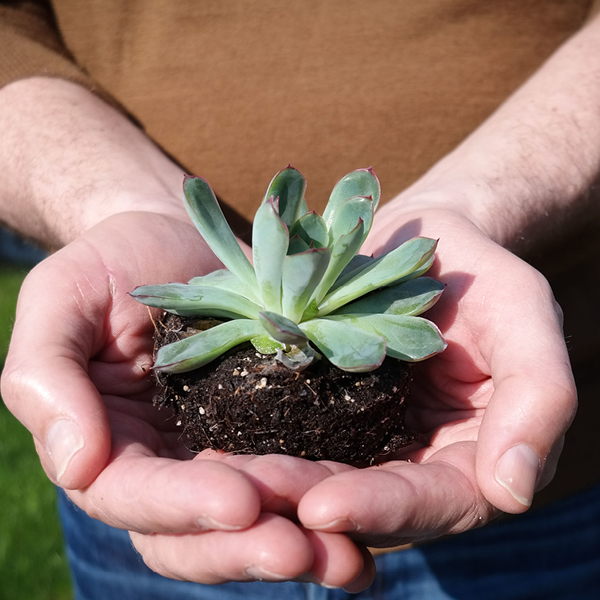Call us: +44 (0)1227 789 649 - Monday to Friday 9am to 5pm
Plant Taxonomy 100 Hours Certificate Course
Plant Taxonomy – 100 Hours Certificate Course
Contact us
PayPal Pay Later
Pay in 3 interest-free payments
-
Choose PayPal at checkout to pay later with Pay in 3.
-
Complete your purchase with the first payment today.
-
Remaining payments are taken automatically.
Pay in 3 is a form of credit, so carefully consider whether the purchase is affordable and how you will make the repayments. Be aware of the possible impact of using Pay in 3 and of missing payments, including making other borrowing more difficult or more expensive. Pay in 3 eligibility is subject to status and approval. 18+ UK residents only. Available for purchases of £30 to £2,000. Terms and conditions apply. PayPal Pay in 3 is a trading name of PayPal (Europe) S.à r.l. et Cie, S.C.A. 22-24 Boulevard Royal L-2449, Luxembourg.
Learn About Plant Taxonomy 100 Hours Certificate Course
If you are serious about a career in horticulture, an understanding of Plant Taxonomy and the role it plays in plant identification is essential. This online distance learning Plant Taxonomy course will help you make plant identification much easier.
Plant Taxonomy will help you learn how to develop the ability to systematically determine a plant’s distinctive characteristics, and verify its scientific classification through analytical observation and assessment.
Accurate plant identification is fundamental in not only recognizing poisonous species, it is also, a mandatory requirement for any individual wanting to work as a professional horticulturist.
Plant Identification – Learn the Methodology!
Taxonomy is the term used to describe the science and methodology for naming and classifying organisms or plants. Without an understanding of the rules of plant taxonomy, it would be unwise to select and grow plants.
Taxonomy plays an important role in new plant cultivars for commercial development.
Horticulturists who develop new cultivars should be able to secure their commercial rights and to achieve a return on their investment. Legal systems for such rights exist in most developed countries.
Plant experts throughout the centuries have used various processes to record and study methods to examine the plant data collected. Various procedures include: botanical illustrations and collecting, and maintaining plant varieties for many centuries. Digital photography is what we use today.
Understanding these practices and procedures and the unique significance of each species of plant, are valuable tools for taxonomists.
This Is A Topic That All Who Work With Plants
Should Learn!
Course Information
Other Categories
Lessons
Lesson Structure: Plant Taxonomy
There are 10 lessons:
1. Introduction to Taxonomy
- Introduction to Plant Taxonomy
- Scientific Vs. Vernacular Names
- Linnaeus
- Binomials
- Uniformity
- Protein Analysis
- Ranks and Language
- Ranks of Classification – KPCOFGS
- Plant Phyla
- Plant Families
- Genus and Species
- Latin Names
- Gardener’s Ranks
- Hybrids
- Subspecies
- Varieties
- Cultivars
- International Code of Botanical Nomenclature
- The Basic Ideas
- Principle of Priority
- Legitimate Naming
- Recent Changes to the Code
- International Code of Nomenclature for Cultivated Plants
- Taxonomic Name Resolution Service
- International Plant Names Index
- Trademarks & Patents
- Plant Breeders Rights
- The Rise of Molecular Data
- The Impact of Molecular Data
2. Describing Plant Parts
- Habit
- Stems
- Hairs
- Leaves
- Compound and Simple Leaves
- Leaf Shapes
- Leaf Margins
- Leaf Structure
- Leaf Arrangements
- Leaf Venation
- Leaf Modifications
- Roots
- Root Modifications
- Terminology
- Flowers
- The Inflorescene
- Fruits
- Dry Fruits
- Fleshy Fruits
- Compound Fruits
- A Key to the Main Types of Fruits
- Terminology
3. Recording & Analysing Plant Descriptions
- Herbaria – Collecting and Preserving a Plant
- Fresh Material
- Arranging Plants for Pressing
- Pressing Difficult Specimens
- The Drying Process
- Herbarium Specimens
- Photographs
- The Problem of Colour
- The Law Relating to Plant Collecting
- Describing a Plant on Paper
- The Equipment You Need
- Botanical illustration
- Floral Diagrams
- Floral Diagram Technique
- Floral Formulae
- DNA Barcoding
- Process of Using DNA Barcoding for Plant Identification
- Applications of DNA Barcoding
- CHEMICAL ANALYSIS (Chemotaxonomy)
4. Taxonomic Techniques
- The advantages of using keys and their limitations
- Using a key
- The rules when making a key
- Lamiaceae (Simplified Key)
- Rules When Writing Couplets
- Best Practice Points
- Making a key
- Why botanical families are so useful when identifying plants
5. Primitive Plants
- The Bryophytes
- Mosses
- Liverworts
- Hornworts
- VASCULAR PLANTS or tracheophytes
- Vascular Tissue and Why it is Important in Evolution of Life on Earth
- A glossary to help you
- The Lycopodiopsida (or Lycophytes)
- Clubmosses – Plants in the family Lycopodiaceae
- Quillworts – Plants in the Family Isoetaceae
- Spike Mosses or Lesser Clubmosses – Plants in the Family Selaginellaceae
- the euphyllophytes – the seed plants, horsetails, and ferns
- The Seed Plants
- Horsetails
- The Ferns
6. Seed Plants
- The gymnosperms
- The cycads – 1 order, 3 families, 10 genera, 285 species
- Ginkgo – 1 order, 1 families, 1 genus, 1 species
- The Gnetidae – 3 orders, 3 families, 3 genera, 71 species
- Welwitschiaceae – 1 Genus, 1 Species
- Gnetaceae – 1 Genus, 30 Species
- The conifers – 3 orders, 6 families, 69 genera, 591 species
- The Conifers’ Life History
- The Cycads, Ginkgo, and Gnetidae — How they Differ from the Conifers
- The Six Families of Conifers
- The Angiosperms
- Flowers and Why they are Important in Evolution of Life on Earth
The Flowering Plant’s Life History - The Diversity of Angiosperms
7. Phylogeny of Land Plants
- Introduction
- Darwin’s Tree of Life Metaphor – The Hidden Bond of Descent
- Why Use DNA Sequences for Classification?
- The Principle of Monophyly
- The Phylogeny of Land Plants
- The major changes in flowering plant taxonomy
- The End of the Monocot-Dicot Split
- Finally, Some Resolution Within the Monocots
- Some Surprises
- Name Changes Resulting from the Increase in Evidence
- When Applying the Principle of Monophyly Results in Name Changes
- What we can learn from phylogenies
8. Monocotyledons
- Summary of Important Families
- The Monocots — SIGNIFICANT FAMILIES
- Arecaceae
- Aizoaceae (syn. Ficoidaceae)
- Dioscoraceae
- Liliaceae
- Orchidaceae
- Iridaceae
- Amaryllidaceae
- Asparagaceae
- Arecaceae
- Pontederiaceae
- Musaceae
- Bromeliaceae
- Poaceae
- Cyperaceae
- Juncaceae
9. Dicotyledons (Part I)
IMPORTANT DICOT FAMILIES
- Key to Selected Angiosperm Families
- Lower-growing Soft-wooded Plants
- Apiaceae
- Asteraceae
- Brasicaceae
- Cactaceae
- Crassulaceae
- Euphorbiaceae
- Gesneriaceae
- Lamiaceae
- Ranunculaceae
- Solanaceae
10. Dicotyledons (Part 2)
- Fabaceae – Papilionoideae, Mimosoideae, Caesalpinoideae
- Fagaceae
- Ericaceae
- Magnoliaceae
- Malvaceae
- Myrtaceae
- Ongaraceae
- Rosaceae
- Proteaceae
- Rutaceae
- Rubiaceae
Please note: Each lesson culminates in an assignment which is submitted to the academy, marked by your tutor and returned with relevant suggestions, and comments, and extra reading if required.
Learning Goals
- Explain how plants are classified, including both benefits of and contradictions within the scientific system as followed by horticulturists and botanical scientists across different parts of the world
- Examine and describe parts of a plant, both sexual and asexual, at various stages of the plant’s life cycle.
- Process descriptive information about a plant using taxonomic techniques that involve processing that data to create a better understanding and/or record of that information.
- Explain a variety of tools used in taxonomic work.
- Explain the taxonomy of land plants that do not produce seeds.
- Explain taxonomy of a range of significant, seed producing plants, including gymnosperms.
- Explain the relationship between different types of plants (i.e. phylogeny), and how molecular information impacts on this in taxonomic considerations.
- Differentiate between at least 10 different families of monocotyledon plants, through inspection and identification of a range of commonly shared characteristics within that family.
- Differentiate between at least 10 different families of dicotyledon plants that predominantly contain lower growing soft wooded plants or herbs; through inspection and identification of a range of commonly shared characteristics within that family.
- Differentiate between at least 10 different families of dicotyledon plants that predominantly contain woody trees and shrubs; through inspection and identification of a range of commonly shared characteristics within that family.
Practical (Set Tasks)
Examinations
Program Summary
More Information
Understanding The Correct Order When Describing A Plant To Another Gardener
When a botanist describes a new species, or when a gardener is accurately describing a plant to another gardener, there is a strict order in which he or she describes the components of the plant. You start with those that are present for the longest time and finish with the most transient. The order is as follows:
- Habit – e.g. woody or herbaceous; tree, shrub, or climber
- Stems – e.g. round or square or ridged; hairy or hairless
- Leaves – e.g. evergreen or deciduous, alternate or opposite, simple or compound
- Flowers – e.g. in an inflorescence or solitary, type of inflorescence, number of sepals, colour of sepals, and so on!
- Fruits – e.g. dry or fleshy
- Seeds – e.g. smooth or rough, colour
Roots are rarely described and are rarely used in identification, but they can be useful. For example, the plants in the Berberis family (Berberidaceae) often have roots with a yellow inside.
HABIT
Plants are generally either woody or non-woody (which is also known as herbaceous). If a plant is woody it may be a tree, a shrub, or a climber. The difference between a tree and shrub is not always obvious. Likewise, some plants that are predominantly herbaceous can become woody at their base. Woody and herbaceous plants have a range of habits from upright to spreading to prostrate.
Another major dichotomy is whether the plant flowers just once or many times in its life. If it flowers many times this is normally every year, and these are called perennial plants. Plants that flower once range from thale cress (Arabidopsis thaliana) which completes its entire life history from seed to seed in just 8 weeks, to the century plant (Agave ferox) which can take 100 years to reach flowering size when grown in glasshouses in England. It produces a huge inflorescence, masses of seeds, and then dies. Plants which flower for many years range from small alpine bulbs to vast tropical trees and these are called monocarpic.
STEMS
The main stem and its branches are the framework that supports the leaves, flowers and fruits. The leaves and green stems manufacture food via the process known as photosynthesis. This food, in the form of sugars, is transported to the flowers, fruits, and roots. The vascular system within the stem consists of canals, or vessels, which transfer nutrients and water upwards and downwards throughout the plant.
A stem’s growing tip, known as the apical bud, is involved in the following processes:
- Stem elongation
- Organising the arrangement of leaves on the stem
- Laying the foundations for the potential development of branches
- Initiation of flowering
An apical bud includes the following:
- Apical meristem
- Leaf primordia (cellular outgrowths on the sides of the apical meristem that will develop into leaves)
- Axillary bud primordia (bulges at the base of each leaf primordium that will develop into axillary buds, which may in turn develop into branches which may eventually be flowering shoots)
The developing stem divides into short sections, called nodes, separated by a leaf or leaves. Leaf and axillary bud primordia develop here. The stem sections between adjacent nodes are called internodes. As the stem grows, the internodes elongate and space the leaves and their associated axillary buds further apart.
To further avoid the crowding of leaves, leaf primordia are positioned in different directions from previously produced ones. There may be one or more leaves at each node. The basic leaf arrangements are alternate (in a spiral), opposite and whorled (in a ring).
The general morphology of stems can vary. They come in a variety of textures from smooth to spongy. They range in colour from white to black. They range in shape from round to triangular. They can also bear a variety of appendages ranging from soft hairs to murderous thorns.
Stems may be modified for a variety of reasons. Some modifications are:
- Tendrils – instead of a leafy shoot, the stem growing from an axillary bud is modified into a twisting climbing tendril e.g. Cissus.
- Thorns – thorns appear along the stem e.g. Bougainvillea.
- Prickles – a prickle is a sharp appendage of the epidermis of the stem i.e. it is a trichome. It is not morphologically a stem or leaf e.g. Rosa spp.
- Stolons – also called runners, stolons are above-ground modifications e.g. strawberry (Fragaria vesca).
- Rhizomes – these are usually horizontal below-ground modifications e.g. Canna spp. but can be above-ground in some irises.
- Tubers – these are large fleshy storage organs including underground stems e.g. potato, and thickened roots e.g. dahlias.
- Corms – these are a thickened stem base which functions as a food storage organ to provide sustenance until the next season e.g. gladioli.
- Cladodes and phylloclades – a cladode is a branch of a single internode which is flattened to simulate a leaf. A phylloclade is an entire shoot similarly flattened. These are often recognised when a flower or fruit appears to be growing from the centre of a leaf which is impossible e.g. Ruscus spp. and Semele androgyne.
Assessment
Assessment is based on a combination of completing all assignments and sitting for a final short one and a half hour exam, in your own location.
If you don’t cope well with exams then you may elect to undertake a project instead. This is a popular option.
In addition, most modules have a Set Task at the end of each lesson placed before the assignment. This is an opportunity to undertake practical work to help you acquire knowledge and skills and practical experience. This ADL feature is an added bonus not found at most online schools. Set Tasks are not required for assessment.
Some courses also have optional Self-Tests which are available on our online learning platform. These are not available by correspondence or by USB, and do not form part of your overall grade.
How our courses work
- Choose Your Learning Method
You choose how you would like to receive your course material, i.e., Online, USB or Correspondence. The choice is yours. You may also work on online or offline. - Tutor Allocation
Every student is assigned their own dedicated tutor who is an expert in their subject area. They provide as much or as little individual contact as you require. You can contact your tutor whenever you need – your hours are not limited. - Feedback and Assignments
Tutor Feedback is an essential component in helping you understand the subject matter. Tutor feedback is given in the form of notes written on the assignment. We encourage you to contact your Tutor where help with clarification and understanding of course material may be required.
Your assignments are located at the end of each lesson. You submit them for marking whenever you are ready. There is no time limit. - Set Tasks and Self-Tests
Most modules have a Set Task at the end of each lesson before for the assignment. This is where you get the opportunity to undertake practical work to help you acquire knowledge, skills and practical experience. Many modules also have short Self-Tests. - Exams
Once all assignments have been completed you may then elect to sit for a one and half hour exam in your own location. If you prefer not to take the exam you do have the option to undertake a project instead.
Once the exam or project part of the course is completed, your Certificate is then processed. Please allow approximately 4 weeks for this. - Design Your Own Qualification
ADL offers students the flexibility to self-design their own qualification – bundling together a combination of 100-hour modules into a qualification higher than a certificate.
FAQ
FREQUENTLY ASKED QUESTIONS
Here is a list of the most often asked FAQ’s.
General
Q. Why should I enrol with the Academy for Distance Learning?
A. Here at ADL, our students are our priority – we treat everyone as a unique individual.
Q. Do I need to buy text books?
A. No, as each module has been written by highly qualified industry professionals. The content of the material is presented in such a way that text books are not required. However, if you require additional reading your tutor will be able to supply a list.
Q. What happens if I have to stop studying for a while? (eg. become sick, go on holidays, have a baby, move house, etc)
A. It’s OK to take a break and start up your study at a later point in time. Just let us know.
Q. Is there an age limit?
A. There is no maximum age limit. We do however, have a minimum age limit of 18 years. Below that age parental consent would be required.
Q. Are your courses up-to date?
A. Our courses are revised and updated on a rotation system.
Q. Do you have a Cancellation policy?
A. Yes. We have a cancellation policy that is fair and equitable. For further details please click here.
Q. Will I have any opportunity to engage with other students?
A. We have a Student Community group based on facebook! If you don’t have a facebook account already, you could make one just for talking with fellow students on the group.
Enrolment
Q. When can I enrol/start?
A. You may enrol and start at any time of the year – it’s all self- paced.
Q. Can I study from anywhere in the world?
A. Our courses are available to anyone, anywhere in the world from the comfort of your own home. The course content is relevant to any country, culture or economy.
Q. How long do I have to complete the course?
A. You complete the course at any time that is convenient for you.
Q. Completing a 100 hour module – how long will it take?
A. For some students a 100 hour module will take approximately to 3- 6 months to complete. Others take less time and some even longer.
Assessment
Q. Assessment – how does it work?
A. For each 100 hour module you are assessed by assignments (at the end of each lesson) and a final one and a half hour exam (or you may elect to complete a Project, instead of sitting the exam) – the choice is yours – you sit for the exam in your own location.
Q. I don’t cope well with exams – what can I do?
A. You may elect to undertake a Project (set by your tutor) instead of sitting the exam. Projects are completed from your home and can usually take a couple of weeks to complete.
Q. If my assignment is not up to standard is there an opportunity to resubmit my work?
A. Yes –
Q. How many assignments do I need to complete for each module?
A. At the end of each lesson, there is an assignment – so if a course has say, 10 lessons, there would be 10 assignments.
Q. I am having difficulty attending workshops/industry meetings, what can be done?
A. If your course requires attendance at workshops, conferences, or industry meetings; alternative arrangements can be made in your country.
Qualifications
Q. What qualification will I receive?
A. For individual modules, you would be awarded a Certificate endorsed by TQUK (Training Qualifications, UK), providing you complete all assignments and the exam. If you just want to complete only the assignments and not sit for the exam or finish a Project, then a Letter of Achievement would be awarded. For more details on qualifications available please click here.
Q. Can I customize my diploma/higher qualification?
A. Not all educational institution’s certificates /diplomas meet everyone’s needs. The opportunity to Design Your Own Diploma at the Academy (subject to our approval) is an added bonus, not found at other colleges. You choose modules that you think will help you in achieving your goal.
Q. What do I get when I complete the course? Will I receive a transcript?
A. At the completion of all courses and providing all assignments and exam requirements have been met, you will receive your Award and a Transcript.
Tutors
Q. Our tutors – who are they?
A. We appoint Tutors and require that they must be currently active in their industry, with at least 5 years’ experience in their chosen profession.
Q. Can I contact my tutor at any time?
A. Yes – you have unlimited access to your tutor via email through our Online Classroom. You can always leave a message with ADL requesting your tutor to contact you. You decide on how much or how little contact you wish to have.
Q. Practical work – How is this done?
A. To find out more about this part of the course please visit the section on How Our Courses Work here.
Career Options
What's Included
What your tuition fees include
- All Course Material via Online, USB or Correspondence
- Assignments Marked
- Professional Tutor Feedback
- Set Tasks - Practical Exercises to help you develop skills
- Self-Tests – multiple choice questions at the end of lessons in most modules
- Unlimited Personal Tutor Support – via our student classroom
- Committed and Friendly Admin Support – vital to your success
- All ADL Exam or Project fees (exception RHS exams)
- Qualification Certificate
- Official Transcript with assignment grades
- Student Manual
Plus FREE
- Academic Writing course (optional - 10 hours only)
- Critical Thinking course (optional - 10 hours only)
- Job Seekers Careers Guide
- Study Tips on How To Study Better
- Career Counselling by ADL Staff
- CV Writing Help, Tips and Advice
There are no hidden extras
Career Opportunities
FAQ - RHS Theory Qualifications
GENERAL
If you require further details about any of the RHS industry recognised qualifications please, call one of our friendly RHS Course Advisors on +44 (0)1227 789 649 or email: [email protected]
Q: When can I Enrol/Start My RHS Course With ADL?
A: Anytime, Anywhere. There are no enrolment deadlines.
Q: I live Overseas. Can I Study From Overseas?
A: You can study any of the RHS theory qualifications overseas. All courses are offered in English. You will need to email RHS Qualifications direct to arrange sitting for your examination overseas.
Q: Is There a Time Limit for Completing an RHS Qualification?
A: At present there are no time limits. However, RHS is contemplating in the future, the introduction of course time-lines.
Q: Are There Any Entry Requirements (Pre-Requisites)?
A: The RHS Theory courses do not require prerequisites, previous experience or any knowledge of horticulture. You just need passion for all things horticulture.
Q: What Course Should I Start With First? I Am New To RHS Qualifications.
A: We highly recommend that you start with Level 2 – Principles of Garden Planning, Establishment and Maintenance.
Q: What Does ADL Course Material Include?
A: Includes Power Point Presentations, Videos and written course lessons.
RHS EXAMS
Q: When Do Exams Take Place?
A: Exams are held on fixed dates in February and June of each year. You should register as a candidate at least 3 months before these dates, so please do not leave exam registration to the last minute
Q: Where Do I Take My Exams?
A: UK: You take the exams at the RHS Wisley Centre, located between Cobham and Ripley in Surrey or at other authorised RHS centres around the UK.
Overseas: please email RHS qualifications direct for centre information.
Q: Exam Pass Marks?
A: Module – pass 50%. Commendation 70%.
Qualification: 50% pass for all modules.
Commendation awarded for all modules.
Each question carries a value of 10 marks.
Q: I’m Not Happy With My Exam Results?
A: You have the opportunity to re-sit your exam at the next opportunity.
There are no restrictions on the number of re-sits you can take. The highest mark you achieve will remain.,







